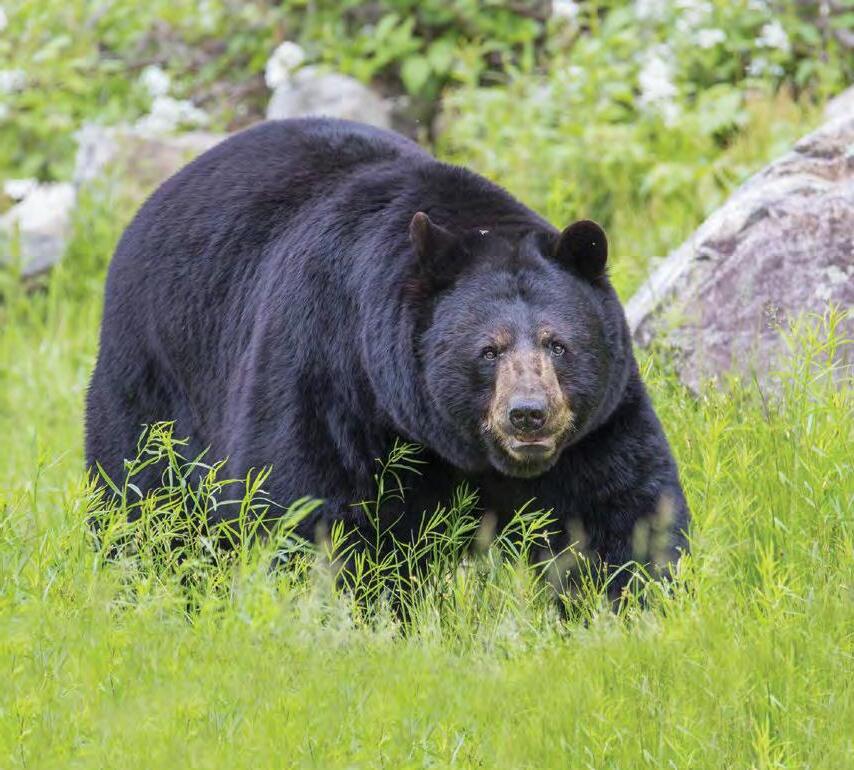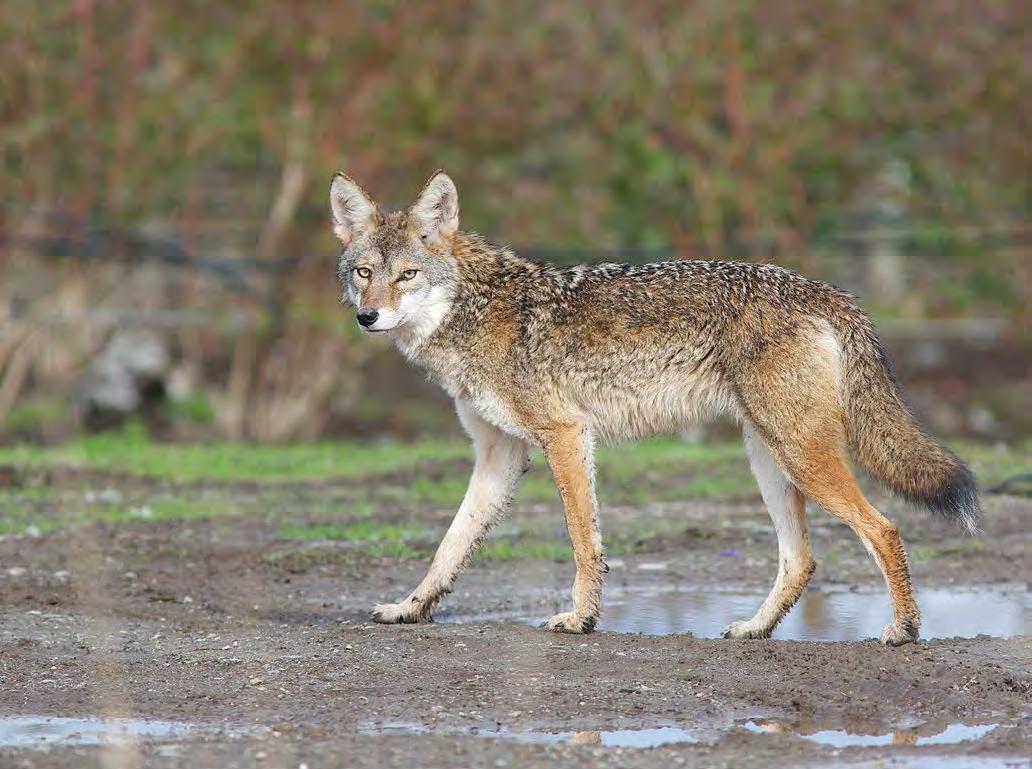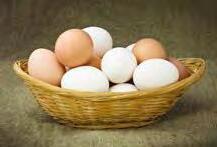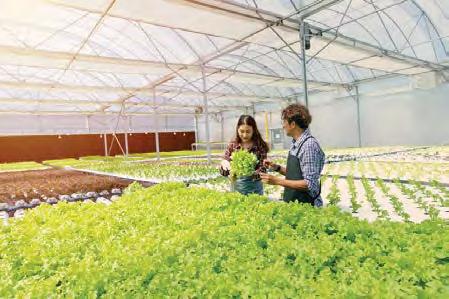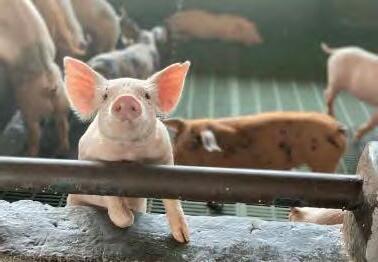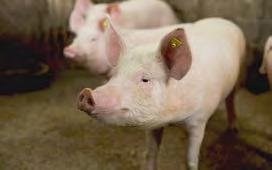

E-Newsletter
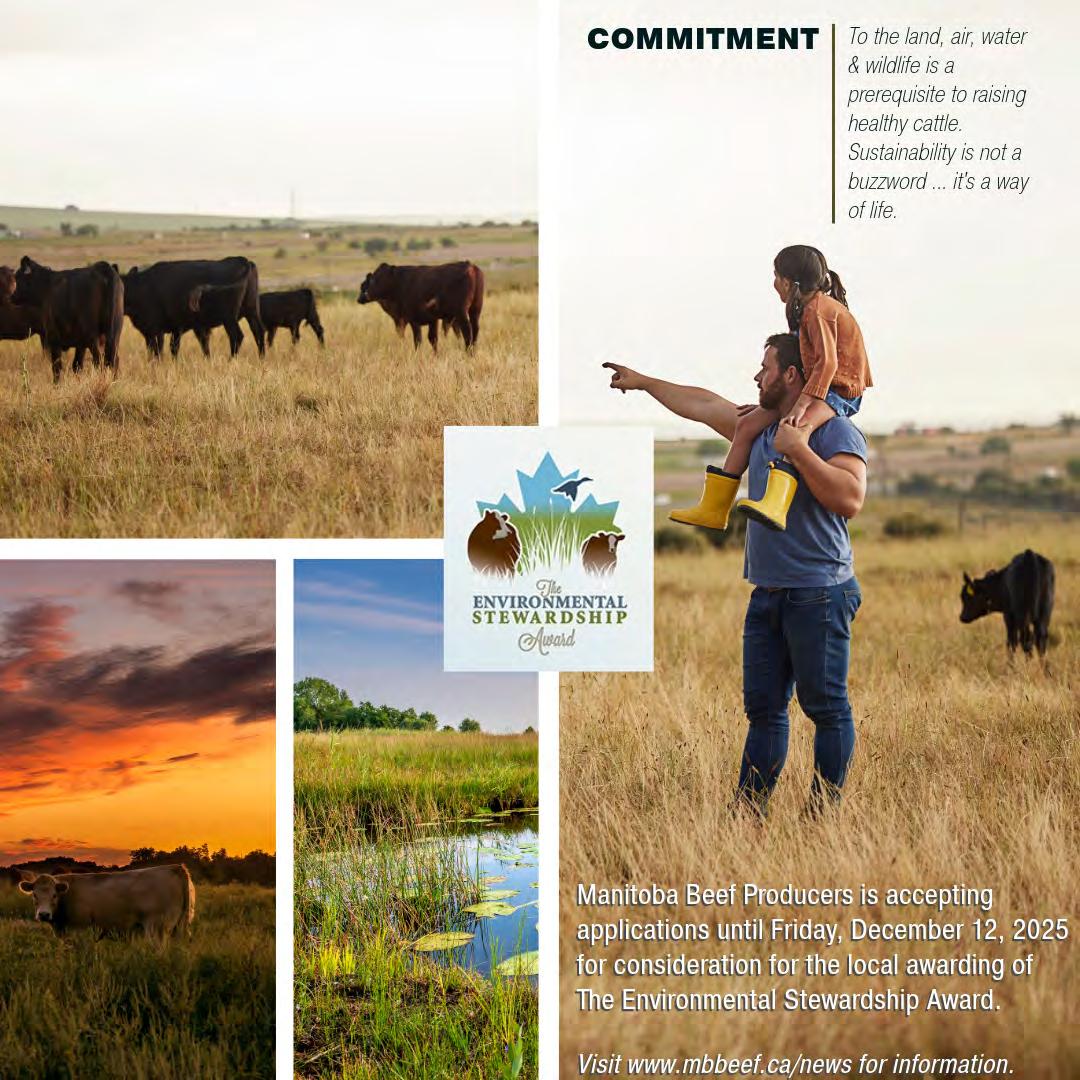
HOW TO NOMINATE
Interested producers can either nominate themselves, or be nominated by another individual or an organization. All methods are equally encouraged. More details and the application form can be found here. If you are a producer who is considering self-nomination, MBP can provide you with guidance and suggestions on completing the application process.
NEWS AND HIGHLIGHTS
Canada and Manitoba Invest $76.9 Million in Rural Infrastructure
The governments of Canada and Manitoba are investing a total of $76.9 million for water and wastewater infrastructure to help municipalities upgrade the critical ...
GoC announces new weather alert system to protect Canadians
Environment and Climate Change Canada announced an important update to its national weather alert program, designed to make weather information clearer for ...
Agricultural Crown Lands in Manitoba – Survey Extended Until December 15
Feedback is sought on: redesigning the lease allocation process, implementing restrictions on leaseholder limits, and revisting the right of renewal for modern ...
Feedback Sought re: Designated Agricultural Plastics & Expansion
Cleanfarms’ draft Stewardship Program Plan (SPP) for designated ag plastics is now available for comment. ....
Resilient Agricultural Landscape & Sustainable Agriculture Manitoba Programs
There are cost-shared funding streams related to agroforestry, grasslands and grazing management, cropland ...
Intake Open for Predator Resistant Fence Construction Program
The intake period for this SCAP program is open until December 8. Financial assistance is available for construction of predator resistant ...
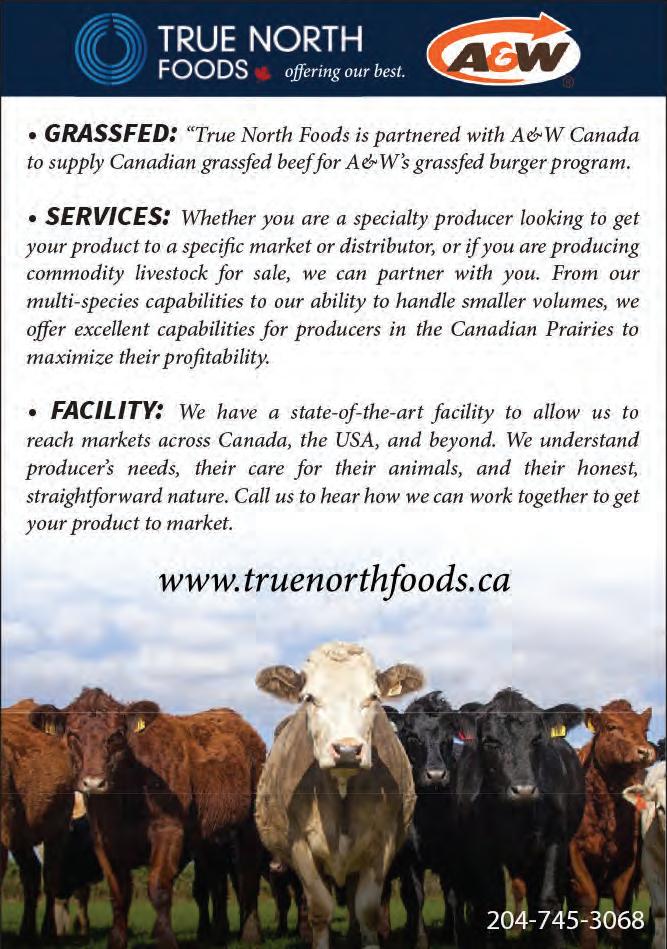



Contract Part-Time Project Manager
Livestock Inspection Services
Manitoba Beef Producers (MBP) is the exclusive voice of the beef industry in Manitoba. It represents roughly 6,000 beef producers across the province. Based in Winnipeg, MBP is a non-profit organization with four staff and a producer-elected board consisting of 14 district directors, each representing cattle producers in a specific region of Manitoba.
MBP’s mission is to represent all Manitoba beef producers through communication, advocacy, research, and education within the industry to governments, consumers and others; to improve prosperity; and to ensure a sustainable future. Funded by producers through the collection of a cattle check-off, MBP is committed to ensuring a sustainable future for the province’s beef industry for the benefit of our beef producer members and all Manitobans.
THE ROLE:
Manitoba Beef Producers’ membership has given direction to see an expanded livestock inspection service implemented in the province. The contract Project Manager will lead the coordination of this effort with direction provided by the multi-stakeholder Manitoba Livestock Inspection Services Working Group (MLISWG). The development and implementation of a mandatory identification inspection system for cattle in Manitoba will help facilitate livestock tracking and help mitigate potential financial losses to producers and other stakeholders related to theft and fraud.
KEY RESPONSIBILITIES AND ACTIVITIES:
• Lead in the development and coordination of the Strategic Plan for implementation.
• Responsible for the planning, implementation, and tracking of specific short-term and long-term goals for the project, which have a beginning, an end and specified deliverables.
• Working with the proponents, provide input into the development of modernized legislative, regulatory and policy frameworks to support expanded inspection services.
• Assist in the creation and provision of tools needed to support expanded inspection, such as information management systems like digital manifests, communications strategies to inform producers and other stakeholders about the implementation of expanded inspection (including its value to the beef industry), etc.
• Liaise with other stakeholders on matters such as the creation of a Manitoba-based RCMP Livestock Investigation Unit, the modernization of the provincial brand registry system, etc
• Coordinate meetings for the MLISWG to ensure the project remains on track.
QUALIFICATIONS FOR THE POSITION:
• Postsecondary education in agriculture, preferably animal science, or a suitable combination of education and experience;
• Strong understanding of the agriculture/agri-food sector, including beef production;
• Understanding of beef industry supply chain;

• Knowledge of legislative and regulatory processes, including the ability to review and analyze legislation and regulations is a definite asset;
• Experience in writing documents for government and industry an asset;
• Strong oral and written communication skills and attention to detail are essential;
• Skilled in writing and editing research or project reports, including financial reporting;
• High comfort level for public speaking and giving presentations;
• Ability to work on multiple projects simultaneously in a fast-paced environment;
• Experience with organizing and participating in trade shows, extension events, etc.;
• Experience in dealing with producers and the general public;
• Strong technical abilities, i.e. experience with Microsoft Office suite, virtual meeting platforms, etc.;
• Able to build solid relationships with teammates, project partners and other specialists by fostering teamwork, partnership and collaboration in virtual or face-to-face settings.
• A highly motivated self-starter able to work both in a self-directed manner, and as part of a small team.
• Valid driver’s license.
Note: Some occasional travel is required, mostly within Manitoba. Occasional evening work may be required.
COMPENSATION:
This position will be a contracted, part-time term position for 24 months. Compensation will be determined in the interview process.
REPORTING STRUCTURE:
The term position of Project Manager-Livestock Inspection reports to MBP’s General Manager.


Manitoba Government Extends Rent Freeze for Agricultural Crown Lands
(October 8, 2025 Province of Manitoba media release) The Manitoba government is extending the rent freeze for Agricultural Crown Lands (ACL) forage leases into the 2026 growing season, continuing its commitment to making life more affordable for producers, Agriculture Minister Ron Kostyshyn announced today.
“Manitoba producers are the backbone of the provincial economy and our government is committed to keeping life affordable for the hard-working Manitobans who put food on our tables,” said Kostyshyn. “Continuing this rent freeze provides financial stability for producers and reflects our commitment to affordability.”
The current rate of $3.66 per animal unit months remains the lowest ACL rental rate in Western Canada.
“This announcement is a relief for Crown land users and gives us some certainty after a year of severe challenges,” said Brent Benson, cattle producer. “From extreme weather to the uncertainty of trade markets and feed supplies, some producers struggled to keep their family ranches operational without having to make decisions that could affect their sustainability or viability. We look forward to working with the Manitoba government as we move toward a system of fair and predictable rental rates as well as policies that encourage young producers to enter the industry, an important component to ensuring the long-term sustainability of the family ranch.”
The ACL program supports approximately 1,750 leaseholders across Manitoba who rely on Crown lands for grazing, haying and cropping activities. These lands are a vital public asset, supporting the livestock sector, advancing sustainable land use, and respecting treaty and Indigenous rights, the minister noted.
“Alongside the rate freeze, the Manitoba government has launched the first phase of a public engagement process to help shape the future of the ACL program. Through an online survey on EngageMB, Manitobans can provide feedback on three areas: lease allocation methods, limits on the total amount of land a single leaseholder can hold, and renewal options for modern leases.
Manitoba Beef Producers appreciates the consultations about various aspects of the Agricultural Crown Lands Leasing Program to ensure it is responsive to the needs of the cattle sector,” said Matthew Atkinson, president, Manitoba Beef Producers. “We strongly encourage beef producers to make their views known during this important engagement process as it will help shape the future of the program.”
This survey represents the first phase of public engagement in the ACL program review. Feedback gathered will help inform proposed regulatory updates and program improvements. Further consultation with stakeholders, including leaseholders and Indigenous communities, will follow before final decisions are made, the minister said.
Feedback collected through the survey and consultations will inform final program adjustments and regulatory updates, anticipated for implementation in 2027, the minister added.
Manitobans interested in sharing their views are encouraged to visit https://engagemb.ca/ag-crown-lands to complete the survey by December 15.

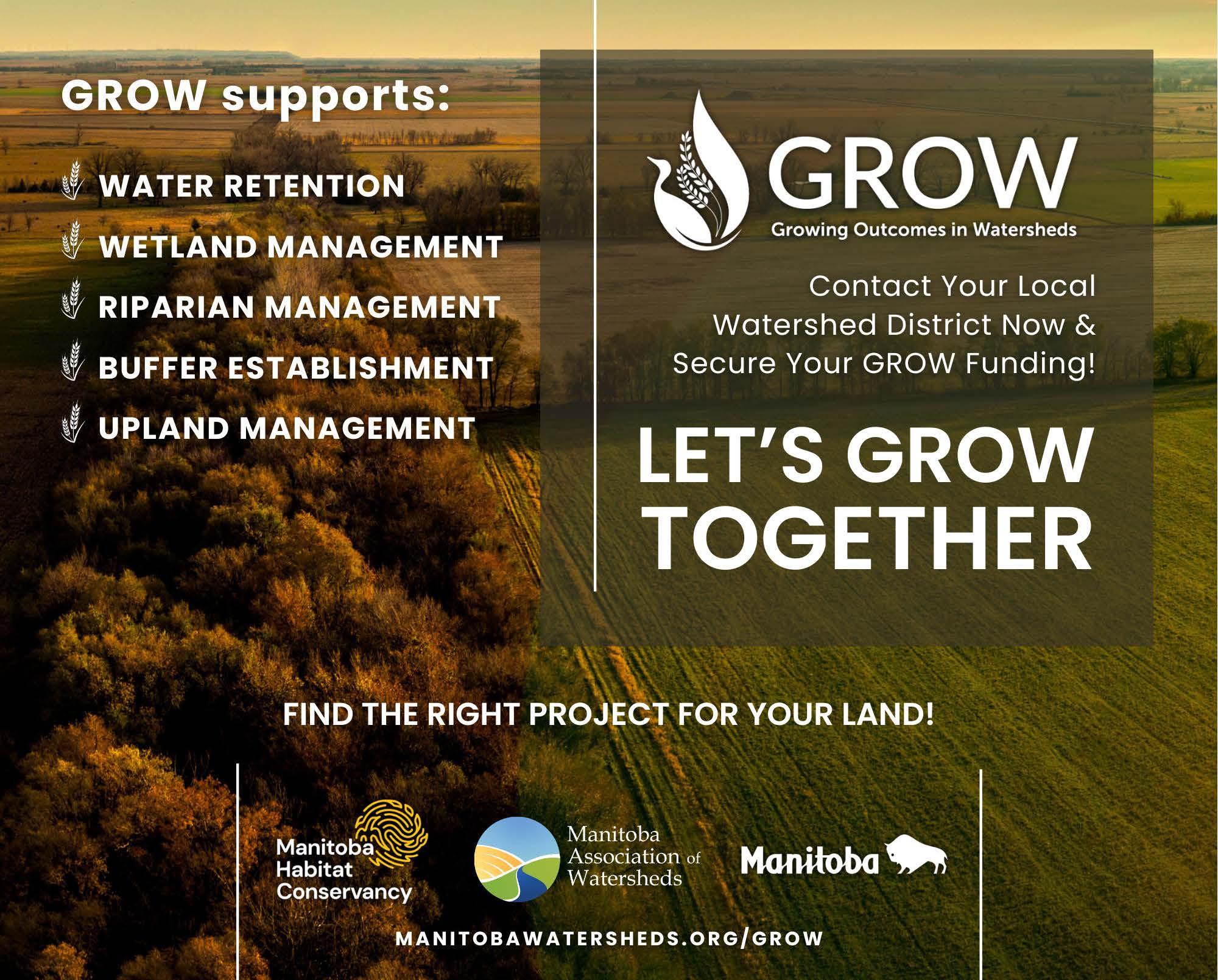
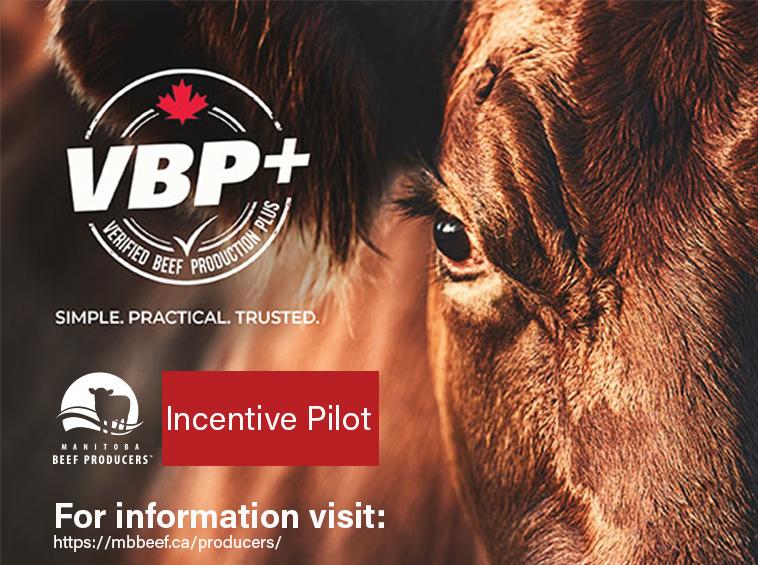

Sweat Equity or Just Sweat?
Many start-up entrepreneurs take two to three years before they draw a consistent wage or salary from their business. But the timeline varies significantly based on the industry, initial investment and market conditions. For the beef industry, the timing when you enter the cattle cycle can have a significant impact. This is often called the "sweat equity" period when you are foregoing current income with the expectation that future earnings will occur.
However, even after this initial phase, many operations, particularly those that are family-based, rely heavily on unpaid labour often from aging or off-farm-working family members which can mask the true cost of production. At this point, an operation must ask: are they building equity or just sweating?
What is the COP Network?
The Canadian Cow-calf Cost of Production Network (COP Network) uses standardized data collection which allows for comparison both within and between provinces, and internationally. Since launching in 2021, the COP Network has collected data from over 235 producers contributing to 64 cow-calf benchmark farms that represent various production systems. Each benchmark is based on data from 3-7 producers. Data collection occurs every 5 years with annual indexing of input and output prices, as well as crop and forage yields, in subsequent years. Individual benchmark farm summaries, can be found at: https://canfax.ca/resources/cost-ofproduction/cop-results.html
Total labour costs both paid and unpaid represents a significant portion of cow-calf total production costs (cash, depreciation, opportunity costs). On average, labour accounts for 17% of the total production costs, with a range from 5% to 34%. This highlights the substantial impact that labour (comprised of hours per cow and wages) has on the profitability and viability of cow-calf operations. Accurately tracking and valuing both paid and unpaid labour is essential for making informed financial decisions, enhancing labour efficiency, and improving overall financial performance. The COP Network examined the relationship between herd size, calving season, profitability, wages and overall labour costs.
You have to pay yourself what it would cost you to replace yourself. It’s the only way to know if your business is really profitable. Otherwise, you’re subsidizing the ranch with free labour. ~ Dave Pratt
Total labour costs averaged $333 per cow, with 15% (or $51) attributed to paid labour and 85% (or $282) to unpaid labour. Labour costs varied significantly, ranging from $73 to over $1,000 per cow. The lower end of the range is associated with larger herds or farms that purchased all or a portion of their winter feed, reducing the labour required for forage production. However, this comes with the trade-off of higher feed purchasing costs. Conversely, farms at the higher end of
the labour cost spectrum are driven by more labour hours associated with small herds and/or have a longer calving window.
Labour costs also vary by profitability group, following a pattern similar to labour intensity (hours per cow). Low-profit farms have an average labour cost of $530 per cow, while medium-profit and high-profit farms report significantly lower average costs of $328 and $143 per cow, respectively. The difference in their means, for each of these groups, is statistically significant.
Note: The benchmark farms were divided into Low, Medium and High profit groups based on long-term profitability (to include unpaid labour). Long-term profitability is revenue minus total production costs including cash cost, depreciation, unpaid labour and opportunity cost on land and capital.
Labour Cost per Cow
$/cow
$1,200
$1,000
$800
$600
$400
$200
$0
AB-5AB-9SK-1bSK-8aSK-8bAB-2AB-3MB-3aSK-13MB-3bAB-1AB-6SK-7AB-11LL_05AB-7LL_04LL_03MB-4AB-4MB-2MB-1MT-5AB-10AB-14SKAB-1SK-1aAB-13SK-6SK-3LL_06QC-3MT-1QC-2BC-5AB-12MT-3BC-3QC-1BC-4ONMB-1BC-6BC-1ON-3QC-4SK-10QC-7SK-9ON-1BC-2ON-2SK-11bLL_01SK-11aSK-5SK-12QC-6SK-4LL_02BC-7MT-2QC-5MT-4MT-6
Source: Canadian Cow-calf Cost of Production Network
Wage
Paid and unpaid labour wages averaged $22 per hour in 2024, with a wider range for unpaid labour. Unpaid labour wages were estimated by asking producers what it would cost to hire someone to perform the same tasks.
Sometimes, annual wages assume the business is also providing other perks like housing, vehicles, insurance, etc. These nonmonetary payments should be clearly understood as part of the ‘total wage’ with a value put on them. Without this, cash wages are not comparable to off-farm.
However, it is important to note that many producers do not consistently track their own labour hours, making it challenging to assign a precise value to their work. Additionally, producers often find it difficult to quantify the value of their own labour, as it involves a blend of
managerial, operational, and hands-on tasks that are not easily comparable to market wages. This subjectivity can introduce variability in labour cost estimates, particularly for unpaid labour.
Labour Hours
Labour intensity averaged 15 hours per cow, with a broad range from 2.8 to 43.3 hours. In comparison, a 2018 USDA study1 , based on the Agricultural Resource Management Survey, reported an average of 19.2 total labour hours per cow, including both paid and unpaid labour. A possible factor contributing to the lower labour intensity in the COP Network is its larger average herd size. The COP Network’s average herd size is 202 head, compared to 100 head in the US study.
Beef cattle operations rely heavily on unpaid labour, with 83% (12.6 hours) of total labour being unpaid and only 17% (or 2.6 hours) being paid labour. Close to one third (29% or 19) of benchmark operations reported having no paid labour at all. This indicates that labour hours or labour cost primarily translates into opportunity costs for the producer. A key question, therefore, is whether the business generates enough income to compensate the operator for the unpaid hours they put into the farm
Herd size
Economies of scale are a major driver, where operations with less than 50 cows invest an average of 25 hours per cow, while herds of 500 or more cows averaged 3 hours per cow. Similar trends are observed in the USDA study, with labour hours dropping from 43.7 hours per cow on farms with 20-49 cows to just 7.2 hours on farms with more than 500 cows. This consistency across studies reinforces impact of herd size on labour intensity.
Average Labour Hours per Cow by Herd Size
Many tasks such as developing a herd health management plan, gathering animals to move to corrals or rotate between pastures, and working on herd records frequently take a similar amount of time regardless of herd size, or only modestly more for larger herds. In addition to spreading time over more animals, larger herds may also adopt more streamlined processes, utilize specialized equipment, and distribute labour more efficiently. Producers expanding their herds must also consider infrastructure capacity, labour availability, and management complexity.
hr/cow
Source: Canadian Cow-calf Cost of Production Network
1 Gillespie, J., Whitt, C., & Davis, C. (2023). Structure, management practices, and production costs of U.S. beef cow-calf farms (Report No. ERR-321). U.S. Department of Agriculture, Economic Research Services https://ers.usda.gov/sites/default/files/_laserfiche/publications/107013/ERR-321.pdf?v=39030 . Accessed on February 28,2025
Labour intensity by calving season
Labour intensity can be influenced by the calving season, as different seasons require varying levels of management. According to Manitoba Agriculture2, total labour requirements are highest for wintercalving operations. Fall-calving operations require approximately 10% less labour, spring-calving operations 20% less, and summer-calving operations about 25% less.
Average Labour Hours per Cow by Calving Season
hr/cow
Calving Start Month
Source: Canadian Cow-calf Cost of Production Network
Reducing labour intensity can enhance profitability
The difference in the hours per cow, for the low-, mediumand high-profit groups, was statistically different, suggesting that more profitable operations achieve greater efficiency, likely due to factors such as improved herd management, economies of scale, better infrastructure, or the adoption of labour-saving technologies.
The COP Network data shows a general downward trend in labour requirements from January to May calving. Some benchmarkfarms in the COP Network calve in June, September, or both Spring and Fall. However, these groups are too small to be representative and are therefore excluded from this analysis
There is no secret to success. It is the result of preparation, hard work and learning from failure. ~
Colin Powell
Reducing labour intensity can enhance profitability by lowering overall production costs and allowing producers to allocate time and resources more effectively. However, labour efficiency alone does not guarantee higher profits; other factors such as herd size, management practices, market conditions, and input costs also play a role in overall financial performance.
Strategies to reduce labour:
1. Simplify feeding and watering
• For smaller herds consider providing multiple days of feed at once.
• Evaluate how many times winter feed is handled (e.g., swathing, raking, baling, hauling, stacking, etc.) and identify ways to minimize this.
• Consider the alternative cost and options (e.g., water development) compared to hauling water to remote pasture locations.
2. Streamline calving management - implement a tighter calving season. Use herd sires with calving ease to reduce need for interventions.
2 Manitoba Agriculture, When Should I Calve My Cows?
https://www.gov.mb.ca/agriculture/livestock/beef/when-should-i-calve-mycows.html#:~:text=Estimates%20on%20infrastructure%20costs%20would,with%20about%2025%25%20less%20labour
Accessed on February 28, 2025
3. Develop a flexible but clear Grazing Plan - reduce scouting or 'guessing' where to move cattle to next. Consider where permanent cross-fencing would help save time.
4. Combine tasks (e.g., vaccinate, tag) - process all cattle at once versus individually.
5. Train cattle for low-stress handling - make the experience less stressful for both the cattle and people. Cull problem cattle that are repeat offenders (e.g., poor mothering, bad temperament).
6. Record keeping - develop a system (e.g., spreadsheets, management app) that allows you to enter the date once, then be able to utilize it for decision making. Minimize multiple data entry points.
Key Takeaways
:
• Labour costs represent a significant portion of production expenses (cash, depreciation, opportunity).
• Labour intensity averages 15 hours per cow, with significant variation based on herd size and management practices.
• Larger herd sizes benefit from economies of scale, reducing labour hours per cow.
• Higher profitability is associated with lower labour intensity (less hours per cow).
• Accurately tracking and valuing of both paid and unpaid labour is necessary for making informed financial decisions, enhancing labour efficiency, and improving overall financial performance.
• If using sweat equity as part of a succession plan, deferred wages should be calculated into your balance sheet to determine the true profitability of the ranch and transparently value that work. This can avoid misunderstandings down the road.

Canfax is funded by Memberships: Subscribe Now!
Or Scan the QR Code for details how

Disclaimer / Copyright Notice: Canfax Research Services (CRS) tries to provide quality information, but we make no claims, promises, or guarantees about the accuracy, completeness, or adequacy of the information. CRS does not guarantee and accepts no legal liability arising from or connected to, the accuracy, reliability, or completeness of any material contained in our publications. Reproduction and/or electronic transmission of this publication, in whole or in part, is strictly forbidden without written consent from CRS.
2025-2026 StockTalk Webinar Series

Manitoba Agriculture is offering a series of interesting livestock and forage presentations, packed with information and featuring innovative leading specialists, aimed at helping Manitoba beef producers best manage their cattle operations. Find out the latest news on research and production for beef and forage management by participating in these virtual sessions.
Date(s):
Time:
Place: Dec.11, Jan.8, Feb.5, March 12 & April 9 12:30 –1:30 p.m.
Your computer, smartphone or tablet
Register for StockTalk webinar: https://us06web.zoom.us/webinar/register/WN_HlmPWqFSJelloMpy5H5zg

Please add the webinar series to your calendar once you are registered.
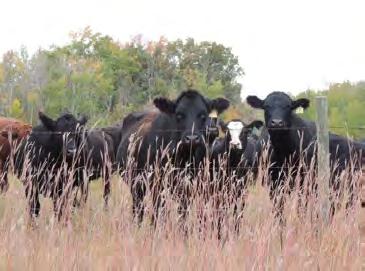
Presentations and topics will cover Cattle Nutrition & Rations, Beef Cost of Production, Agri-Stability, Cattle Marketing, Beef and Forage Days Highlights, Ask the Vet, Forage Production & Management, Pasture Forage & Water Survey Results & a chance to ask questions to the speakers and Livestock & Forage Specialists.
For more information, call Manitoba Agriculture 1-844-769-6224
Or visit our website at manitoba.ca/agriculture/online-resources/stock-talk.html

Livestock Predation Prevention Program
Program Description
The Livestock Predation Prevention Program supports adoption of non-lethal, on-farm measures that reduce the risk of livestock predation by wolves, coyotes, bears and other predators. Reducing livestock predation promotes the co-existence of wildlife and livestock in agricultural regions of Manitoba.
Who Qualifies
Livestock producers who have both:
• A paid livestock predation claim under the Manitoba Wildlife Damage Compensation Program in 2021 or later.
• A Manitoba Premises Identification Number.
What Qualifies
Eligible expenses include constructing predator resistant fencing to deter attacks on livestock by coyotes, wolves, and other predators. The objective of a project must be to deter predation of livestock located on Manitoba farms. More details of eligible expenses can be found in the program guide.
Caps Applied to Funding for Fence Projects
FUNDING AVAILABLE
Predator Resistant Fence Construction
Eligible producers can apply for funding to support construction of fencing that deters predators from entering calving and lambing areas, pastures, extended grazing areas, and deadstock compost sites. Producers will receive a funding decision letter indicating the approved budget for eligible projects.
Important Dates
December 8, 2025: Deadline for fence construction applications.
October 30, 2026: Complete fence construction.
November 27, 2026: Complete fence inspection and risk assessment.
December 18, 2026 Deadline for submitting claims for completed fence projects.
Cost-Share and Funding Cap
Eligible applicants can be reimbursed for up to 75 per cent of total approved eligible expenses, to a maximum of $40,000.
Maximums also apply based on the size, type and purpose of the fence constructed.
Retrofit addition of apron
$1.50 per linear foot
An applicant’s total funding for fence construction is capped at $40,000. Based on 75 per cent government cost share, this cap is reached with total eligible expenses of $53,333.33 (or more). Depending on fence length and type, funding approved may be less than $40,000.
Total Incremental personal labour and equipment use that can be claimed is capped at $3/foot for building fences and $1/foot for adding an apron to an existing fence. Based on 75 per cent government cost-share, the payment for total incremental expenses will be up to $2.25/linear foot for building a fence and $0.75/linear foot for adding an apron.
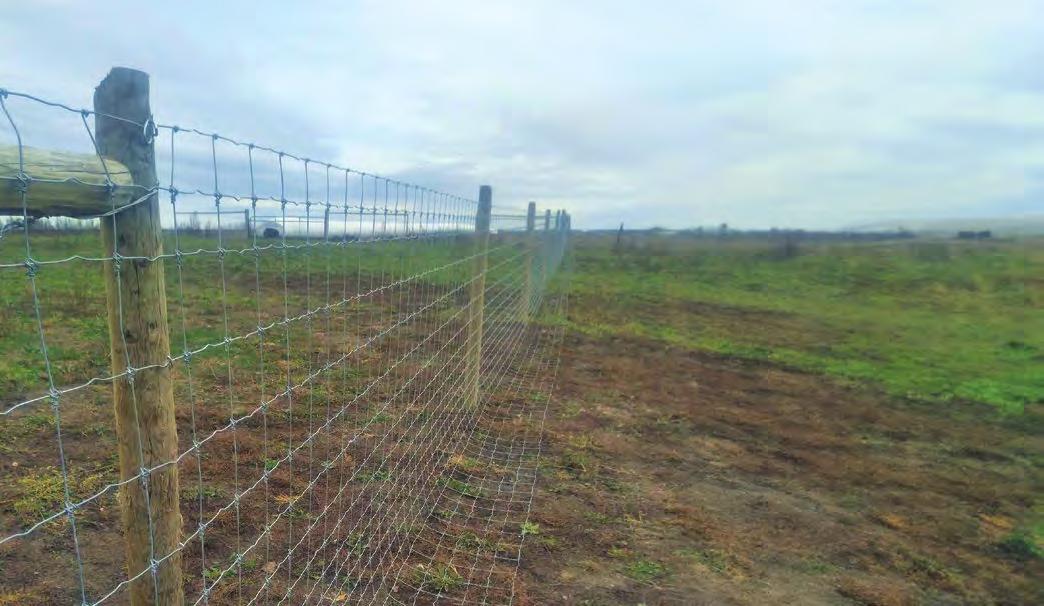
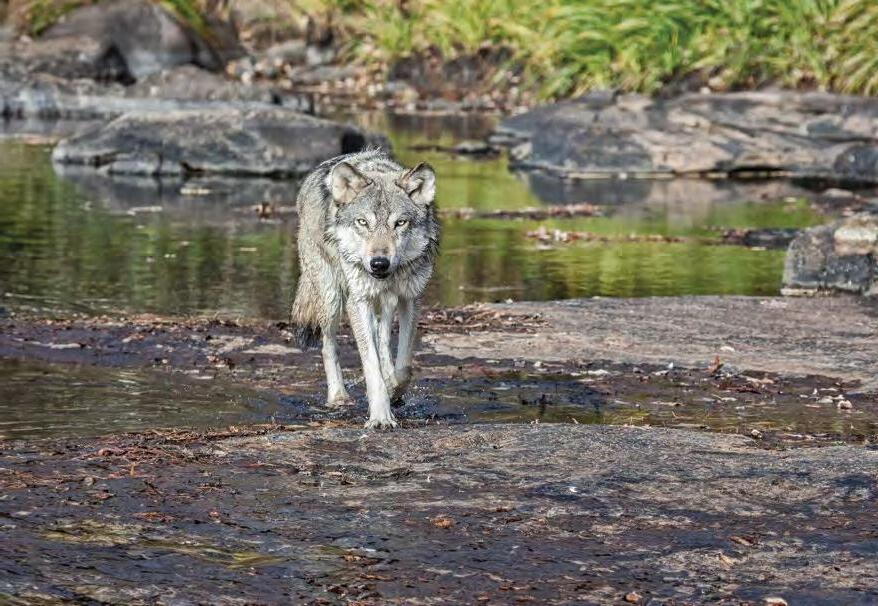
Eligible Expenses
· Incremental personal labour at $30/hour and incremental personal equipment use at fixed, program rates.
· Subcontracted services related to custom labour and custom equipment use.
· Equipment rental for completion of the project.
· Materials and supplies such as gates, lumber, wire, and energizer (0.7 joules or more).
· Provincial Sales Tax (PST).
Further conditions for a fence project:
· Fences are inspected to verify work completed and that they will deter predators.
· A livestock predation risk assesment must be completed before payment is issued.
· Specific ineligible items include barbed wire fences, hard-wired power sourcing, temporary or mobile fences, infrastructure and land preparation inside the fence, and fences around feedlots, feed storage areas and non-grazed crops.
· Eligible expenses must have occurred on or after April 1, 2026, and be supported by an invoice and proof of payment. All invoices for eligible expenses must be issued in the applicant’s name, and payment must be made by the approved applicant.
Fence Inspection
Fences constructed to contain cattle, sheep and other livestock are often ineffective barriers to predators. To be effective, fences must be constructed to deter predators from climbing over, passing through, or burrowing under them. All fence projects are inspected to verify that the work has been completed and the fence will deter predators. See the program guide and the Sustainable CAP website for fence standards as well as guidelines and examples for fence construction.
Livestock Predation Risk Assessment
A livestock predation risk assessment must be completed prior to payment being issued. It helps to understand the risks on a farm but does not change the fence payment. The assessment normally takes about two hours to complete. Approved applicants will be contacted by a livestock, wildlife or other specialist to arrange the assessment.
An inspection of the finished fence can be arranged by calling the Program Information Line at 1-800-811-4411 or emailing agriculture@gov.mb.ca. The applicant will then be contacted by an inspector from their local MASC Service Centre. The completed inspection report will be submitted by MASC on the applicant’s behalf.
HOW TO APPLY FOR FUNDING
The documents needed to apply can be found on the Manitoba Agriculture website:
· Applicant information form
Application worksheet for fence construction
Go to manitoba.ca/scap/resiliency/livestock/fencing.html to find these forms and the program guide.
Claim statements will be forwarded to applicants with approved fence projects. Once all fence construction is completed, submit all invoices and proof of payment, along with the claim worksheet for processing.
An applicant can submit one fence claim worksheet over the 2026 program year. The documents can be emailed to: agriculture@gov.mb.ca
